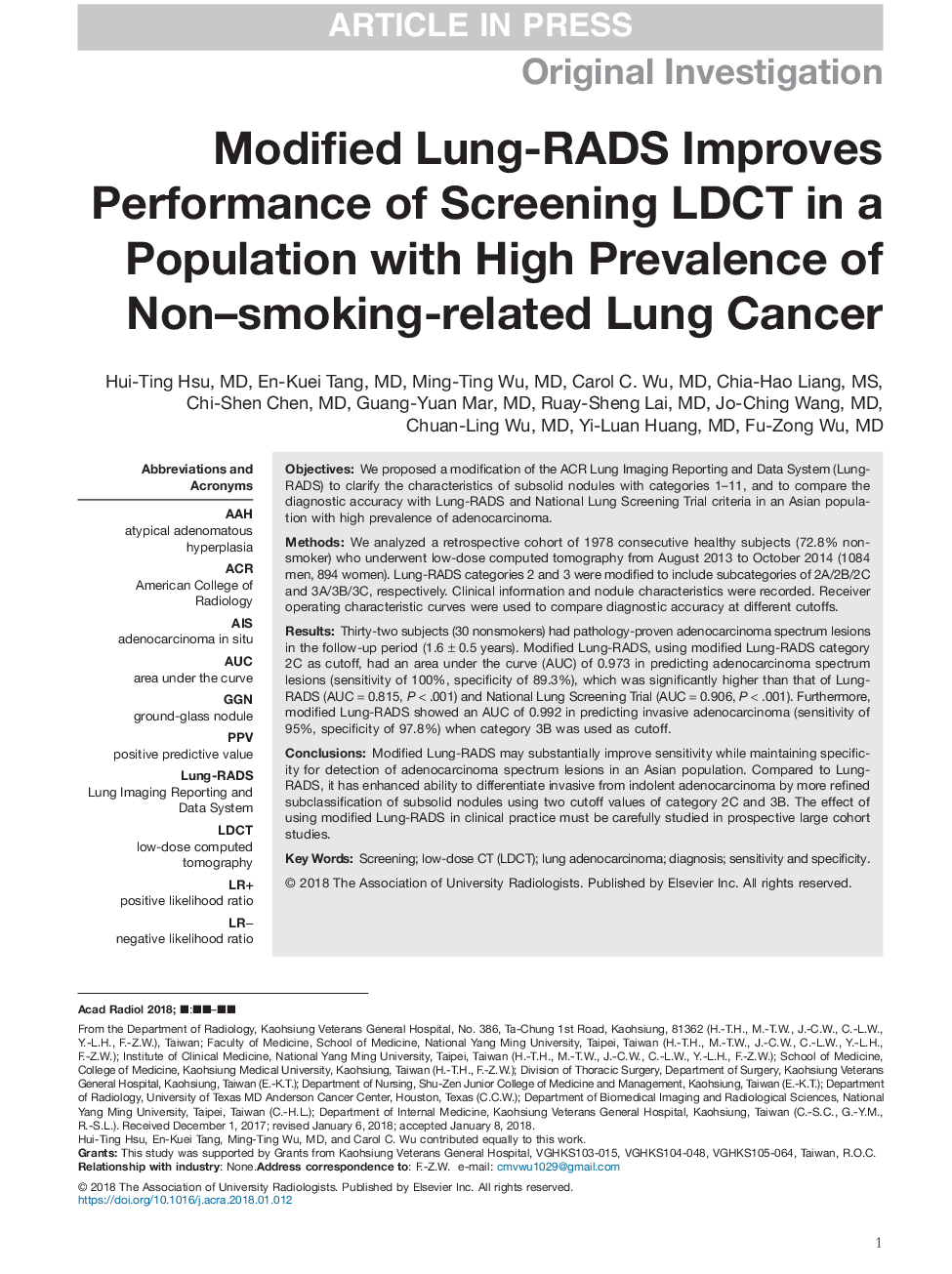| Article ID | Journal | Published Year | Pages | File Type |
|---|---|---|---|---|
| 8964823 | Academic Radiology | 2018 | 12 Pages |
Abstract
Modified Lung-RADS may substantially improve sensitivity while maintaining specificity for detection of adenocarcinoma spectrum lesions in an Asian population. Compared to Lung-RADS, it has enhanced ability to differentiate invasive from indolent adenocarcinoma by more refined subclassification of subsolid nodules using two cutoff values of category 2C and 3B. The effect of using modified Lung-RADS in clinical practice must be carefully studied in prospective large cohort studies.
Keywords
GGNSSNAAHROCPPVAISACRMIANPVNLSTLDCTLR−AUCLR+Adenocarcinoma in situMinimally invasive adenocarcinomapositive predictive valuenegative predictive valueDiagnosisLow-dose computed tomographySensitivity and specificityLung-RADSlung adenocarcinomaScreeningNational lung screening trialarea under the curvepositive likelihood rationegative likelihood ratioAtypical adenomatous hyperplasiareceiver operating characteristicsAmerican College of RadiologySubsolid noduleGround-glass nodule
Related Topics
Health Sciences
Medicine and Dentistry
Radiology and Imaging
Authors
Hui-Ting MD, En-Kuei MD, Ming-Ting MD, Carol C. MD, Chia-Hao MS, Chi-Shen MD, Guang-Yuan MD, Ruay-Sheng MD, Jo-Ching MD, Chuan-Ling MD, Yi-Luan MD, Fu-Zong MD,
